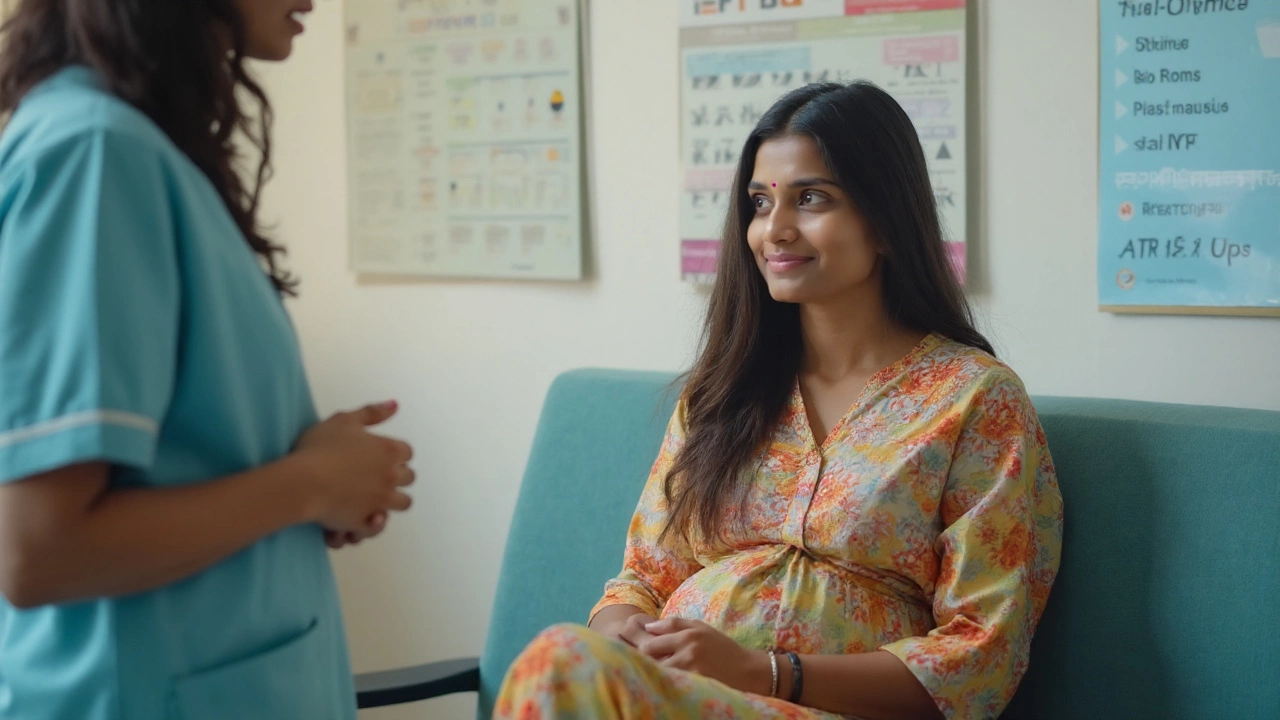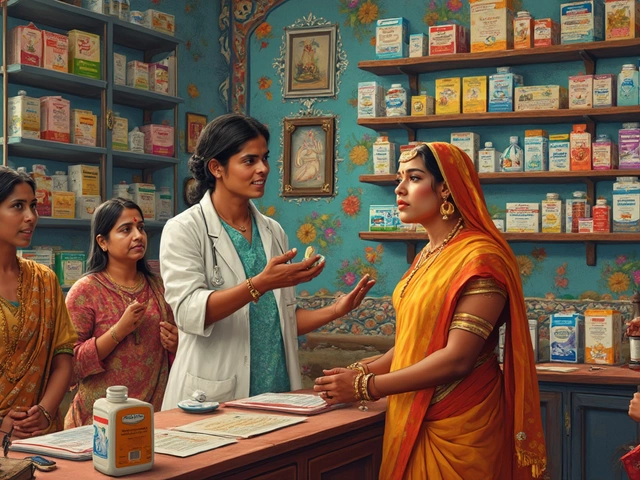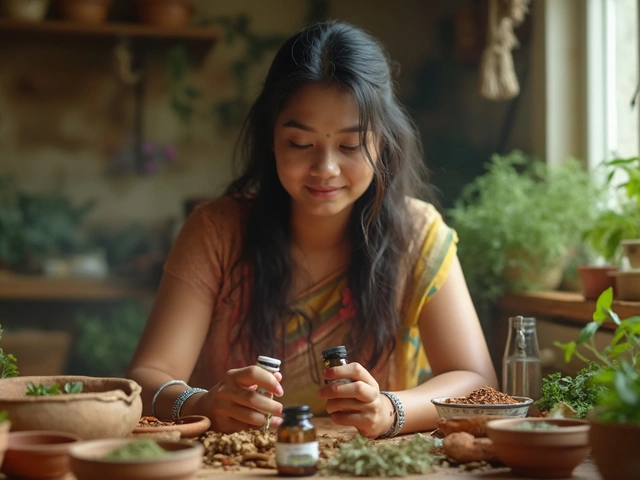So, you know someone who's thinking about IVF, or maybe you're considering it yourself. People talk about the miracles—tiny heartbeats after months or years of waiting. But there’s a flip side that barely makes it to family chats or WhatsApp groups: the real risks that come with those tiny embryos. The unspoken stuff. The biggest risk? It's not just a single thing. IVF carries several life-altering dangers—some you can see, some you won't feel until it's right in your face.
Decoding the Biggest Risk: Ovarian Hyperstimulation Syndrome (OHSS)
Let’s get honest—every time you hear about IVF on the news or from your neighbor, they jump straight to twins or test tubes, right? But behind the scenes, the single most feared medical complication is something called Ovarian Hyperstimulation Syndrome (OHSS). Doctors don’t always explain how it actually feels. OHSS hits about 1 out of 20 women undergoing IVF, though severe forms are less common, showing up in around 1-2% of all cycles.
Here’s what’s wild—OHSS isn’t just a bad tummy ache. It's a condition where the ovaries get overstimulated due to fertility drugs, swelling up to the size of small melons. You could start out with mild nausea and a bloated belly, and then, almost overnight, start fighting off heavy, crushing abdominal pain, throwing up, finding it hard to breathe, and sometimes even passing out. The reason? Your fluids start leaking out from blood vessels, collecting in the wrong places like your belly or chest, and your blood thickens, creating a risk for serious blood clots. Docs even worry about kidney and liver shutdowns if it gets that far.
The craziest part? The symptoms don’t always show up immediately. Sometimes, they hit after the egg retrieval, and other times, weeks later—sometimes when you’ve already had the embryo transfer. Plenty of women power through the first few days, thinking it’s just bloating or normal discomfort from the injections. But then things start to feel really wrong. Persistence is everything if you notice leg swelling, sudden weight gain (like 2-3 kg in just a day or two), or if your pee slows down way more than usual.
Not every IVF cycle brings OHSS, and doctors are smarter these days—using milder doses, more targeted drugs like GnRH antagonists, and sometimes freezing all embryos to delay transfer until the body calms down. In fact, clinics in India and abroad now monitor ovaries with ultrasounds and bloodwork every few days, watching for red flags. Still, it can sneak up, especially in younger women, women with polycystic ovaries, or those who produce tonnes of eggs in one cycle.
For those worried about OHSS, some practical tips: ask the clinic about your risk level based on your age, hormone tests, and medical history. Don’t ignore signs, and don’t self-medicate pain or nausea—IVF clinics in metro cities like Delhi, Mumbai, and Bangalore usually have emergency numbers and protocols. If you’re thinking of taking a break between retrieval and transfer, talk to your specialist; sometimes patience is the real secret to safety.
Multiple Pregnancies: Double the Joy, Double the Stress
Twins, triplets, even quadruplets—sounds straight out of a Bollywood blockbuster. But in reality, multiple pregnancies from IVF bring headaches that Instagram never shows. Between the years 2010 and 2022, the rate of twins after IVF in India hovered around 25%, while for natural conception it's barely 1%. Why? Because doctors sometimes transfer two or three embryos at once, hoping at least one will ‘stick.’
The risks? They're not small. Carrying more than one baby hikes up the chance of premature birth—babies born before 37 weeks, which is risky for their lungs, brains, and long-term health. Premature twins and triplets often spend weeks in a NICU (neonatal intensive care unit), fighting for breath in glass incubators under harsh blue lights. New Delhi hospitals see hundreds of such cases every year, with anxious parents praying for their babies to grow strong enough to go home. What nobody likes to discuss is that babies born too early can face lifelong issues, from learning disabilities to vision and hearing loss.
Mums-to-be also suffer. Carrying multiples is tough on the body. There’s a way higher risk of high blood pressure (pre-eclampsia), gestational diabetes, back-breaking weight gain, and serious bleeding during delivery. C-sections become almost inevitable. Then there’s the emotional impact—imagine sleepless nights times two (or three), expenses on special baby formula, or trying to juggle two sick infants during flu season. And yes, the chance of losing one or more babies during pregnancy is real. Even though many clinics now push for transferring just one embryo, the temptation is high for couples who've been waiting years. You want to get your money’s worth, right?
If you’re feeling pressured to choose more than one embryo transfer, take a breath. Ask your clinic for their current success rates with single-embryo transfers (many top Delhi clinics now have rates up to 60% for women under 35). New genetic tests can identify the best quality embryos, so you can focus on one and still have a great chance. If your doctor recommends more than one, ask why—and whether there are alternatives based on your age or medical details. This is your body, your life, and your family’s future. Don’t just say yes to what sounds fast or easy.

Long-Term Health Impacts: The Silent Risks After IVF
One question everyone avoids: After you finally have that baby, can IVF change your long-term health? This isn’t a straightforward yes or no. Let's break it down—there’s no clear evidence that IVF causes cancer, but there are a few weak links that researchers are watching closely. For example, some studies in the US flagged possible connections between high hormone levels in IVF and a tiny increase in breast or ovarian cancer risk—mainly for women with a family history of these diseases.
Most experts agree that your underlying risks—like PCOS (polycystic ovary syndrome), obesity, or family history—are the real drivers. But people who go through repeated IVF cycles, with huge spikes of artificial hormones, deserve frank conversations with their doctors about regular check-ups. Plus, while IVF itself doesn’t make you diabetic, those who get pregnant through IVF tend to be older or have metabolic syndromes, so it pays to be extra watchful for high sugar levels and blood pressure later on.
What about mental health? Here’s something most women won’t admit openly: The stress, disappointment, and anxiety of repeated IVF cycles can last long after the last injection or embryo transfer. Studies from Europe have shown that rates of depression and anxiety can be up to two times higher in couples who’ve faced multiple failed IVF cycles, especially if there’s no clear communication from the clinic. Social stigma and well-meaning but clueless relatives can make you feel stuck in a loop of helplessness and guilt. Men aren’t off the hook, either—many partners struggle to open up, even as they support their wives through cycles of injections and heartbreak.
If you’re looking to keep yourself safe, ignore the pressure to be “strong” all the time. Seek out a counselor who’s familiar with fertility issues. Clinics in Delhi now offer group therapy and one-on-one sessions, often included in the cost. Lean into partnerships and friendships, and don’t be afraid to question your doctor if you’re worried about physical or mental after-effects. The best way to fight long-term risks is with eyes wide open—don’t sandbag your anxiety or sweep lingering worries under the rug. You have more power than you think.
Smarter Choices: How to Lower the Risks and Find the Right IVF Path
Alright, so you know the pitfalls, but what actually helps you stay out of them? It all begins with the right clinic and team—not just an attractive price tag or a flashy success rate on a website. Walk into those clinics and look for how they monitor for OHSS: do they personalise drug doses, check hormone levels, and have a backup plan for freezing embryos if risk gets too high? Watch how open they are to explaining things without sugarcoating. A good clinic is never in a rush to start injections before you’re fully clear on what’s expected and what to watch for.
Another big tool: genetic testing. It’s not cheap, but more clinics in India are offering pre-implantation genetic screening (PGS), which lets doctors pick the healthiest embryos, lowering the risk of failed cycles or miscarriages. If you have underlying health conditions—diabetes, PCOS, thyroid imbalance—or are over the age of 35, get these checked and under control before beginning. Biggest risk of IVF isn’t always what you see in Google headlines; it could be what you don’t ask or don’t check before jumping in.
Practical steps to remember?
- Insist on a clear, written plan—dosage, monitoring schedule, who to call in an emergency, when to come in for checks.
- If you feel unwell at any point (bloating, pain, breathlessness), don’t brush it off. Early reporting truly saves lives.
- Discuss embryo transfer numbers, and never get pushed into more than one unless it’s medically necessary.
- Make mental health non-negotiable—ask about therapy, join a support group, or connect with others through safe online forums.
- Stay physically active, eat balanced home food, and, unless your doctor specifically advises, keep life as normal as possible.
Cost can be an obstacle, but taking shortcuts on safety or skipping counseling always costs more in the long run. IVF brings hope—and yes, magic for thousands of families. But don’t let the rush to parenthood sideline your health or peace of mind. Every risk can be managed, but only if you know it’s there and insist on the right support.



